Going with the Floe — professor and students collaborate to create simple, cooling solution
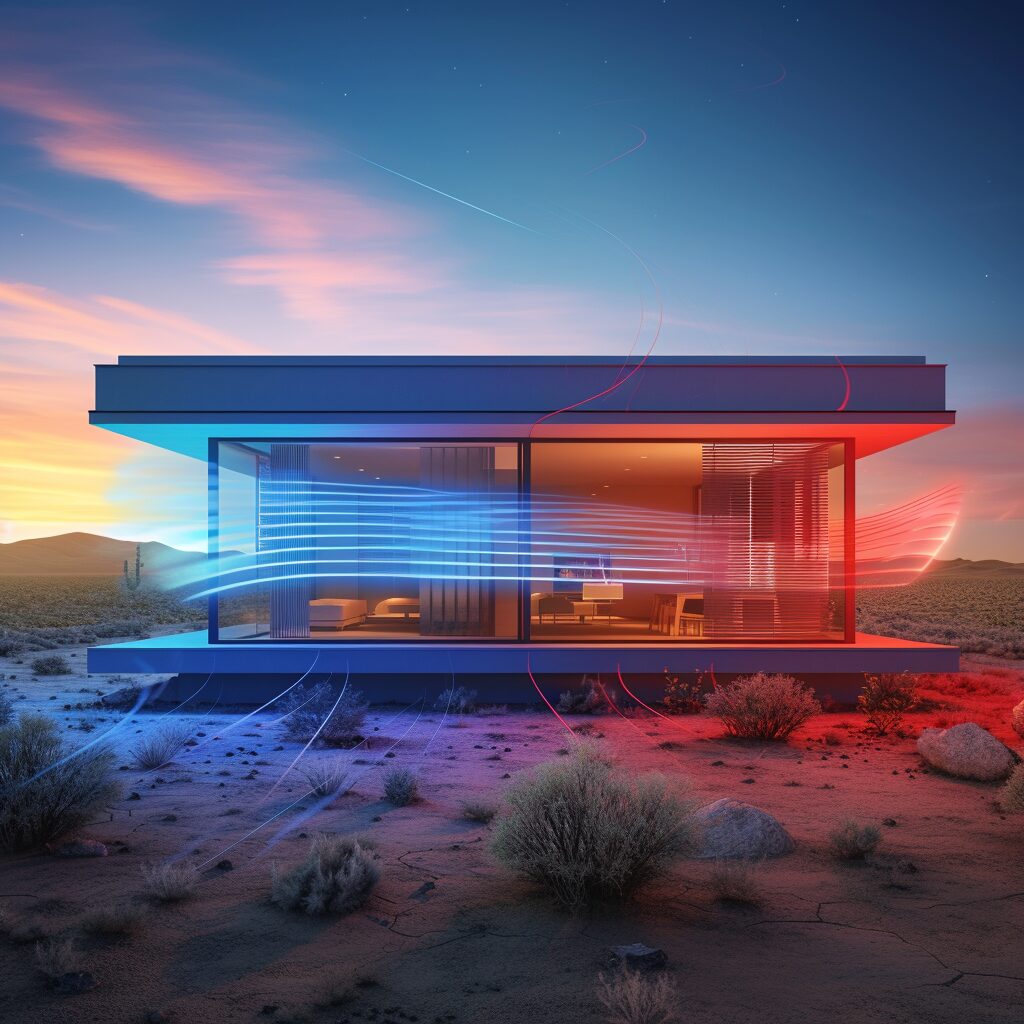
Sometimes, the solution is simple. That was the idea with SmartFan, now named Floe, or what Alexander Shenkin calls a box fan with a brain.
During a hot summer in Panama, Shenkin first conceptualized a cheaper, more sustainable cooling system. He dreamt of a device that could use temperature sensors to make use of cool nighttime air.
Now, with the help of NAU students and prize money from the City of Flagstaff and Arizona State University, Floe fans will soon be found cooling select households in Flagstaff. Shenkin and his team are aiming to create a “radically accessible solution” and a business that will eventually grow to offer cooling and heating solutions locally and worldwide.
The forest calls to Shenkin and leaves him with a passion for conservation
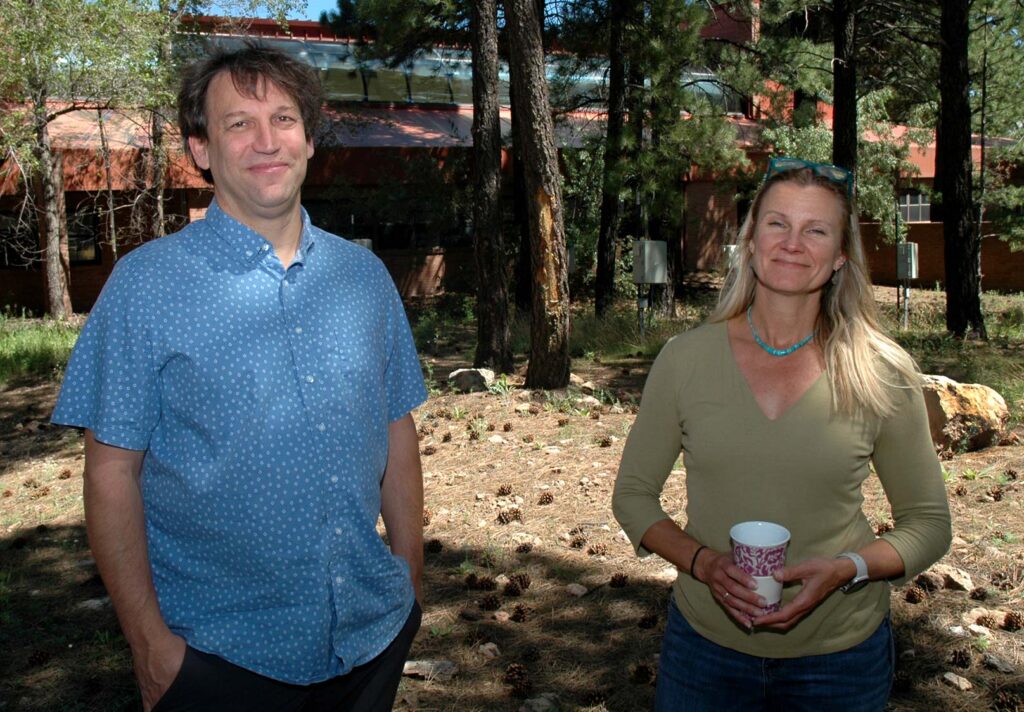
Shenkin started off working in engineering physics but soon found he wasn’t “enamored with the cubicle life,” often watching the clock at the office. An interest in Great Apes itched at the back of his mind. While attending graduate school, he spent part of his summer with an orangutan rehabilitation organization in Borneo, an island in Southeast Asia’s Malay Archipelago. His time in the island’s forest, among gibbons and orangutans, introduced him to the complexity of conservation efforts. Borneo is home to an active illegal logging industry where powerful timber barons profit off poor locals who need the work.
The complicated and urgent work of conservation called to Shenkin. He went to Yale to study forests and later worked in Central and South America. While working and living in Panama, a couple mundane discoveries pushed Shenkin to conceive of Floe:
- His house was hot.
- The air conditioning unit was expensive and ineffective.
- In the evening, the weather cooled.
Air conditioners use compressors, chemical refrigerants, and a whole lot of energy, Shenkin said. Heat pumps demand a good amount of energy too.
“Well, this is crazy,” thought Shenkin. “Why are we paying for all this electricity and emitting carbon, when I could just stick a window fan in the window and bring that cool air into the house in the evening.”
He resolved to build a fan.
But his life got busy, so the idea was shelved in Shenkin’s mind for the next 12 years.
NAU Capstone students transform idea to product
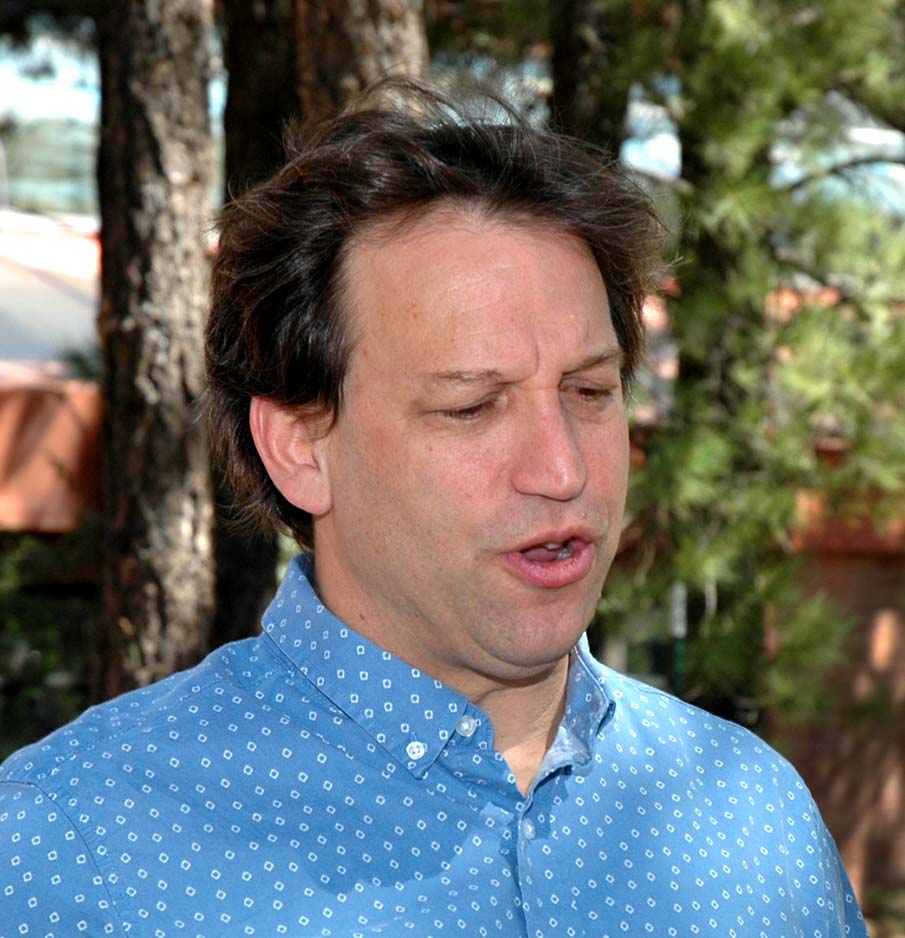
These days, Shenkin is an assistant research professor in the School of Informatics, Computing, and Cyber Systems at NAU. At the university, he works with computer science students working on their capstone. With more time and brainpower, Floe started to come to life.
The team started with a $30 box fan from Amazon.
“We stuck some wires in, put brains in it, and a couple of temperature sensors so that it just turns on when it ought to turn on,” Shenkin said.
Their initial prototype did that job. The next step was to optimize — to use algorithms and AI to predict upcoming weather so that this “fan with brains” could cool the house a little extra the night before a scorcher.
Computer science seniors in their capstone class are typically tasked with a lot of technical issues, but those who helped make Floe learned how to sell their product and apply for funding.
“It was really thrilling for them and a big experience,” Shenkin said. “It was really fun for us too, to teach them how to give a pitch instead of just how to program something.”
This Spring, the project was awarded Arizona State University’s 10X Grand Prize. NAU will receive $100,000 to advance the project, and the team’s community partner, Habitat for Humanity, will receive an additional $50,000 to support implementation of the solution in 40 starter homes. The project also earned another $5,000 by winning third place in the City of Flagstaff’s Innovate Waste Challenge.
Floe will soon be found in Flagstaff homes and NAU dorms.
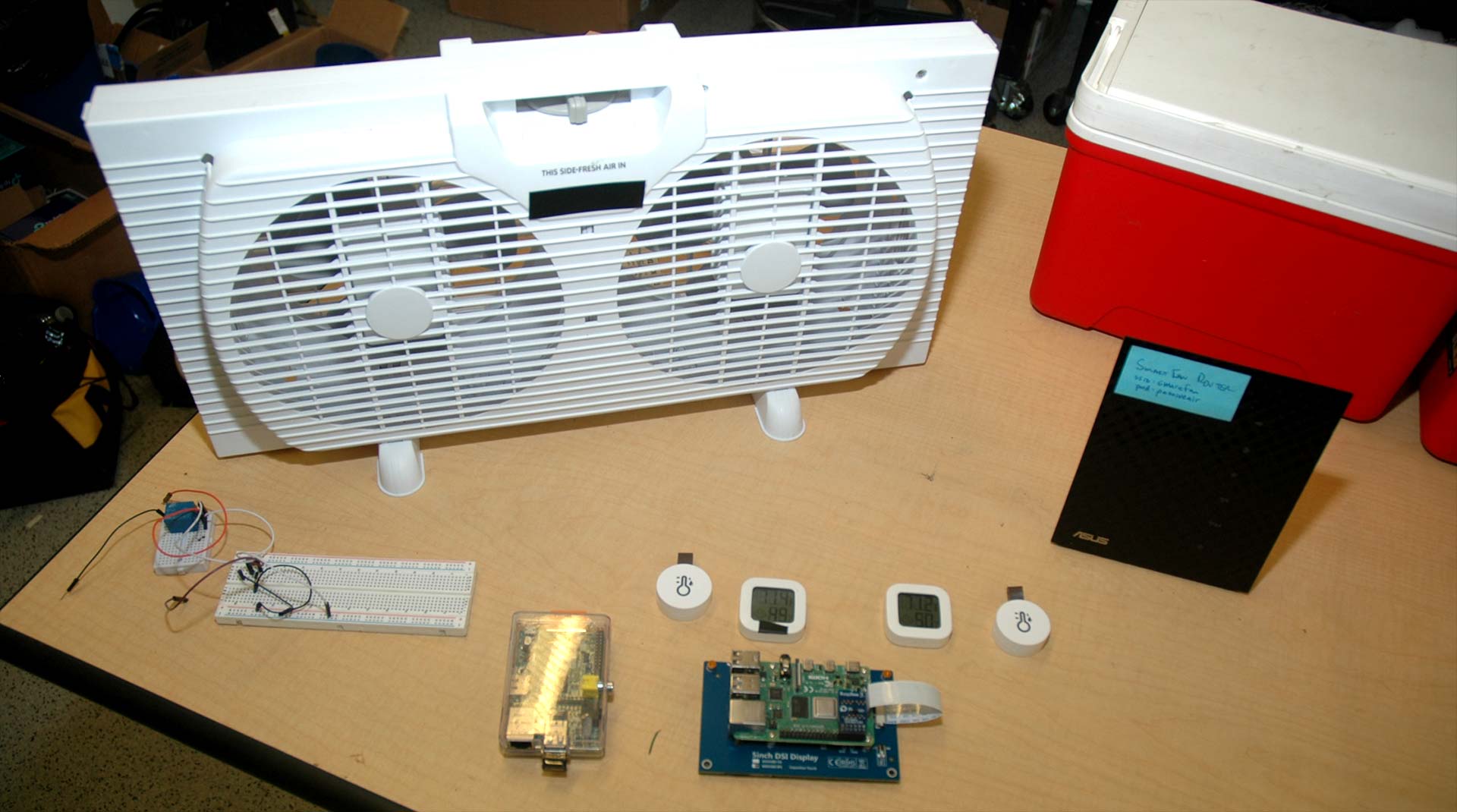
Working with a source of climate control that’s “hidden in plain sight”
For some consumers, balancing personal comfort and sustainable living can feel challenging. In regions where the summers are warming, many of the technologies used to cool contribute to the heat.
“It’s a wicked cycle,” Shenkin said.
The world’s existing cooling equipment demands a lot of power and much of it uses hydrofluorocarbon refrigerants, which are potent greenhouse gasses. Emissions from refrigeration and air conditioning account for 7% of global greenhouse gas emissions today and are expected to double by 2030, then triple by 2050, according to the United Nations Environment Programme.
Innovations in the energy sector can conveniently tie lessened energy strain to lessened pocketbook strain. So, while the environmental consequences of different industries can go unmeasured and unpenalized — impacts on biodiversity, air quality, pollution, etc. — energy is packaged in a way that directly impacts consumers.
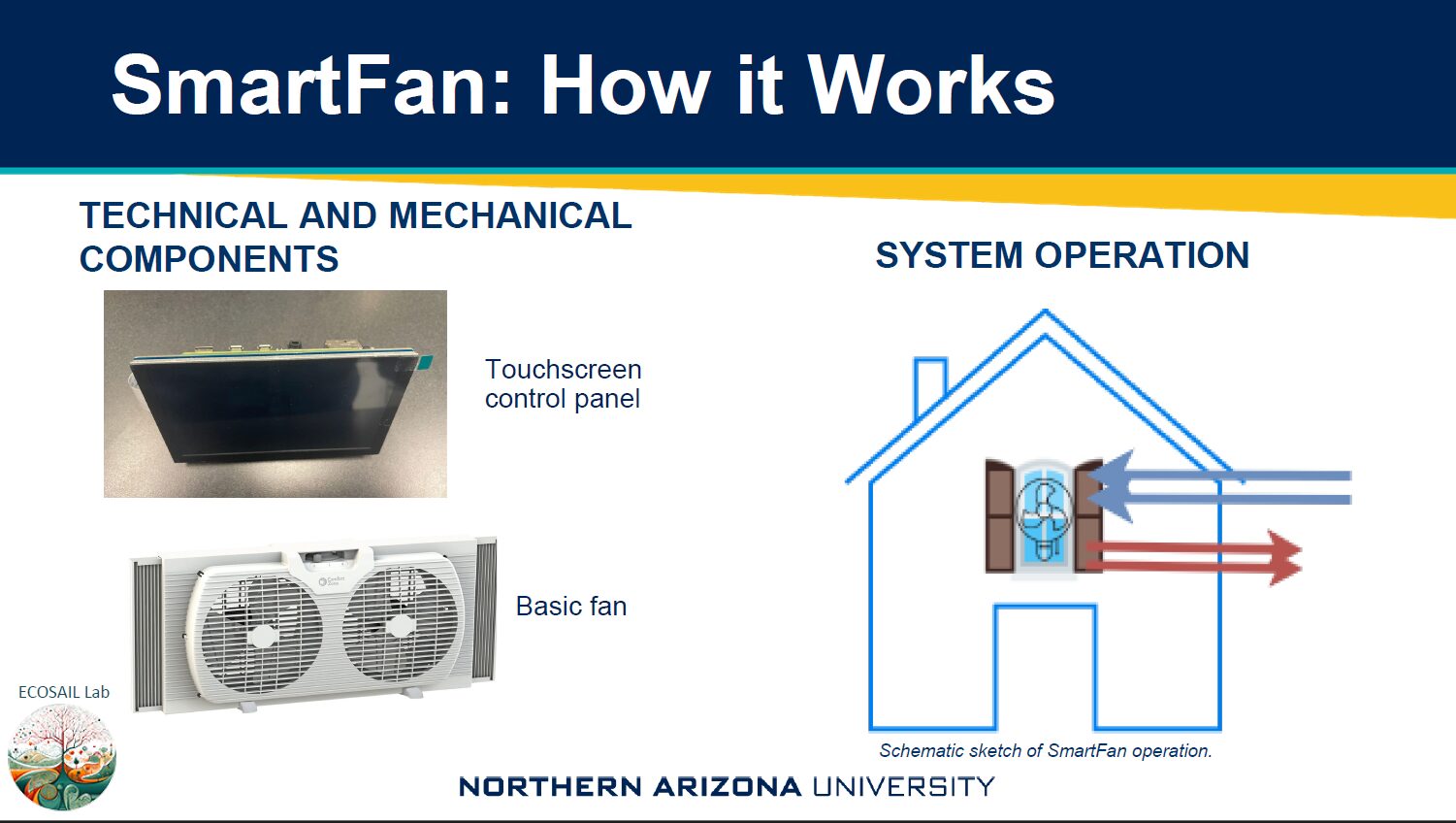
“Energy, while it might not be properly priced, is at least priced,” Shenkin said. “So, when your pocketbook feels better in terms of energy costs, the planet feels better as well…. By making a cheap solution, people will buy it, so it’s going to be economically attractive because it’s environmentally attractive.”
In many different regions, from Flagstaff’s semi-arid climate to Panama’s tropical climate, the sunset offers a big temperature drop. From Shenkin’s perspective, this is a source of climate control “hidden in plain sight.” Floe is cheaper to buy, cheaper to run, and works alongside a widely available resource — nighttime air.
The materials and the technology are not out of the average consumer’s price range. At about projected $99 for the basic unit, Floe is a vastly cheaper alternative to AC. For those who already have installed an AC or central air, Floe can still help take on some of the cooling work. In the future, Shenkin hopes Floe will be able to communicate and coordinate with other household cooling systems.
Floe’s Flagstaff future — a local business with worldwide ambitions
In about a year, Floe fans will be cooling dorms and homes in Flagstaff. These first fans will help Shenkin and his team determine what to fix before putting Floe in stores, a goal that is still a few years off. For those unable to afford Floe, Shenkin is hoping to find ways to work with funds to get fans into homes for free.
With its dramatic day-to-night temperature changes, Flagstaff is “an ideal environment for this innovation,” Shenkin said. As the CEO of Floe, he dreams of seeing the company create a larger and larger presence in Flagstaff.
“We’re thinking big,” Shenkin said. “We’re thinking of changing the landscape of sustainable cooling around the world, and it will have been a Flagstaff-based innovation.”



